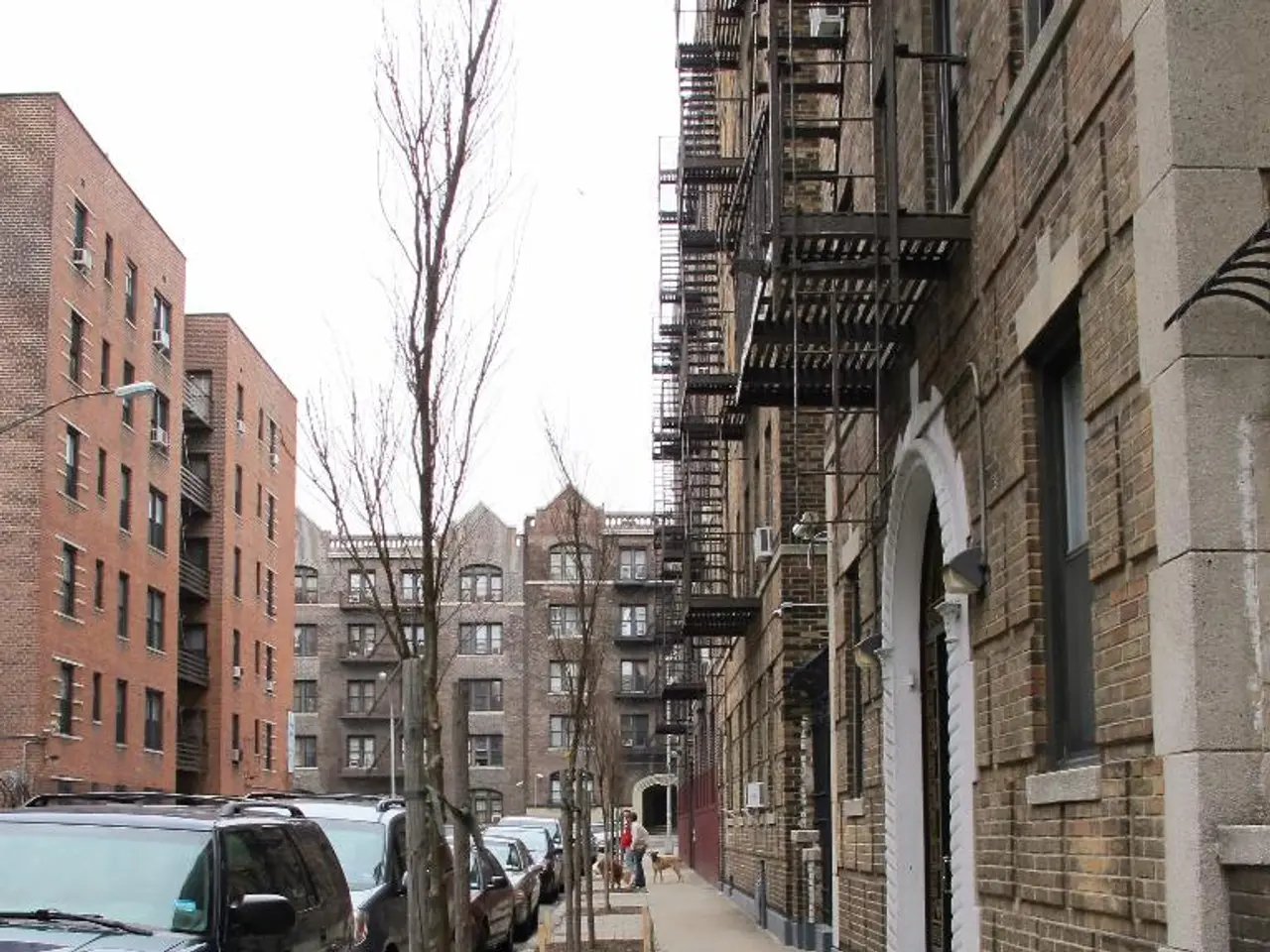Vienna's "Social Housing" Scheme Revealed as Financially Overburdened - Not a feasible Model to Follow
In the heart of Europe, Vienna, Austria, is renowned for its social housing system. However, a closer look reveals a complex landscape of affordability and challenges.
As of July 2025, a new lease for a shared apartment (Wohngemeinschaft) in Vienna, inclusive of all additional costs such as electricity, water, and heating, amounts to approximately €630 per month for a room of about 15 m² in a 4-room flat. This might seem affordable compared to other cities, but the system has its drawbacks.
One such issue is the entry fee for typical cooperative apartments in Vienna, which stands at around $38,000. This high barrier makes it difficult for low-income households and immigrants to access these housing options.
The funding for Vienna's public housing comes from a 1% wage tax on all workers, including those who may never benefit from these programs. This spending, however, has faced challenges. In 2016 alone, Vienna's public housing faced a shortfall 1.6 times its annual rental income, leading to delays in desperately needed maintenance.
Vienna is shifting its approach from being a developer and landlord to leveraging its monopsony power. The city extracts hefty markups when selling land to public-private partnerships. Tenants often face additional costs, with an average of $2,500 paid to the previous occupant for cosmetic "improvements" they may not even want.
The benefits of Vienna's social-housing system are not evenly distributed. Long-term tenants in inherited units pay far less than newcomers, who pay a 17% rent premium per square foot. Well-off professionals can hold on to subsidized units indefinitely, while lower-income families are effectively locked out.
The city's social housing is expensive, with tenants facing significant additional costs beyond base rents. Once expenses like utilities, repairs, and maintenance are included, rents for new leases across Vienna, including social housing, are only marginally lower than those in major German cities.
A third of municipal housing units in Vienna lack basics like central heating or private bathrooms, conditions that would make them unfit for social-assistance recipients in Germany.
The greatest challenge in Vienna's social housing model is its increasing unsustainability. Policies like requiring two-thirds of new units to be set aside for social housing might slow construction in U.S. cities if implemented there.
Experts suggest a different approach. Tobias Peter, a senior fellow and codirector of the American Enterprise Institute's Housing Center, advocates for unleashing housing supply by reforming restrictive zoning and reducing regulatory barriers. He believes this is the best path forward to tackle housing affordability.
It's important to note that Vienna's social housing success story is largely due to unique post-World War I circumstances. Rents in Vienna's social housing are taxed at 10%, while they are not taxed at all in Germany. Austria spends about 0.25% of GDP on social housing, the third highest in the OECD.
If New York's leaders want to address housing affordability, they need to understand markets, as suggested by the experiences of Vienna and other cities. The 1968 Housing and Urban Development Act's "urban renewal" destroyed neighborhoods across America, especially black communities, serving as a cautionary tale.
In conclusion, while Vienna's social housing system has its merits, it also presents challenges. Understanding these complexities is crucial for any city aiming to address housing affordability issues.
Read also:
- Federal petition from CEI seeking federal intervention against state climate disclosure laws, alleging these laws negatively impact interstate commerce and surpass constitutional boundaries.
- Duty on cotton imported into India remains unchanged, as U.S. tariffs escalate to their most severe levels yet
- Steak 'n Shake CEO's supposed poor leadership criticism sparks retaliation from Cracker Barrel, accusing him of self-interest
- President von der Leyen's address at the Fourth Renewable Hydrogen Summit, delivered remotely




